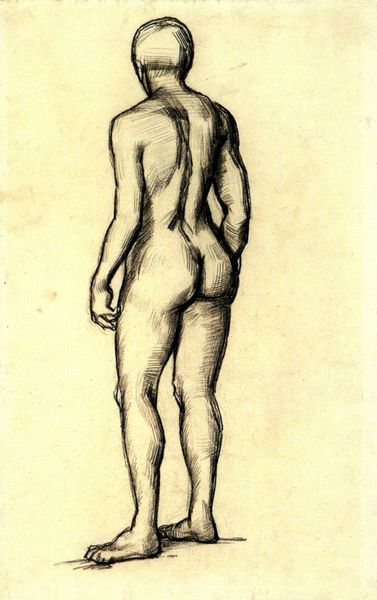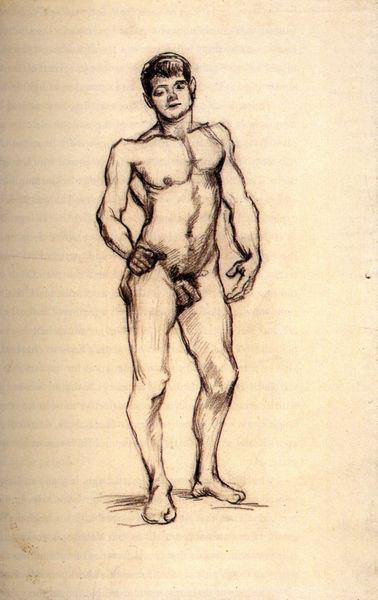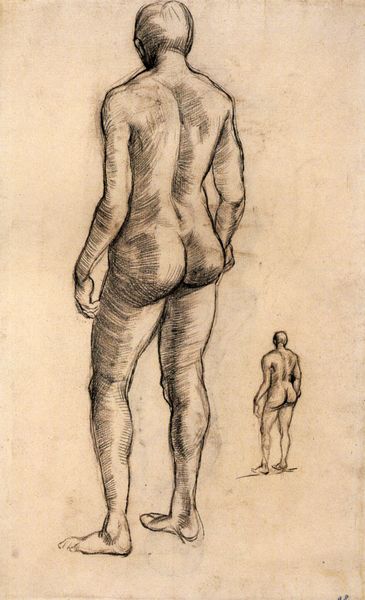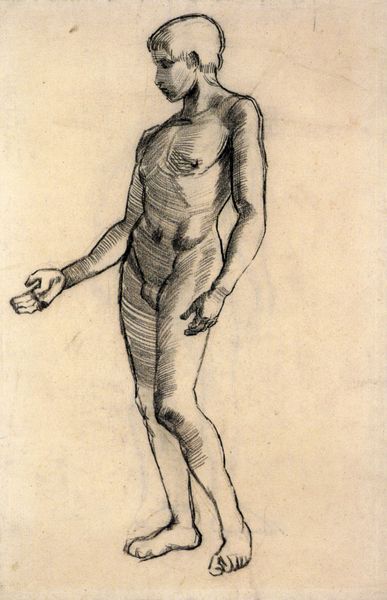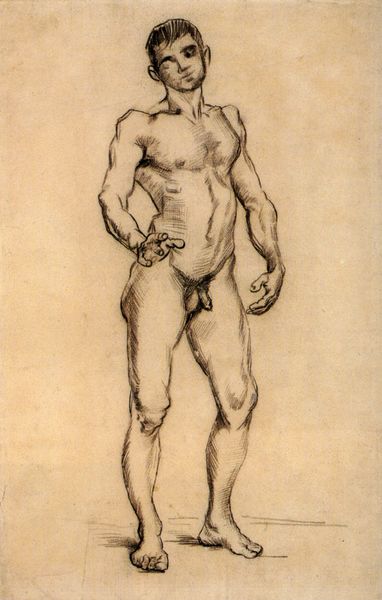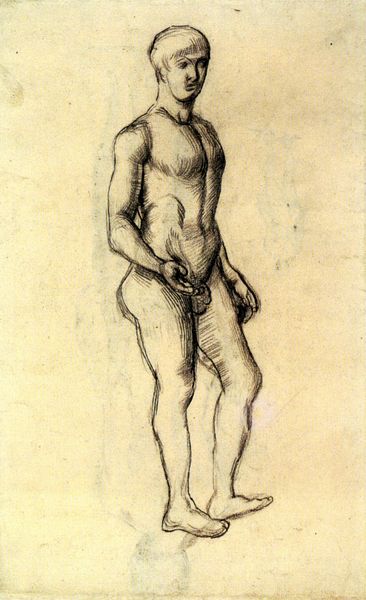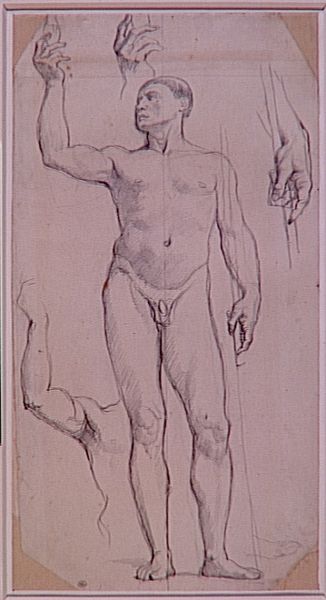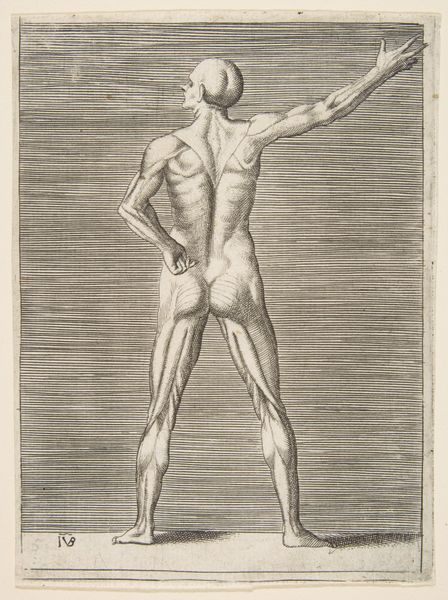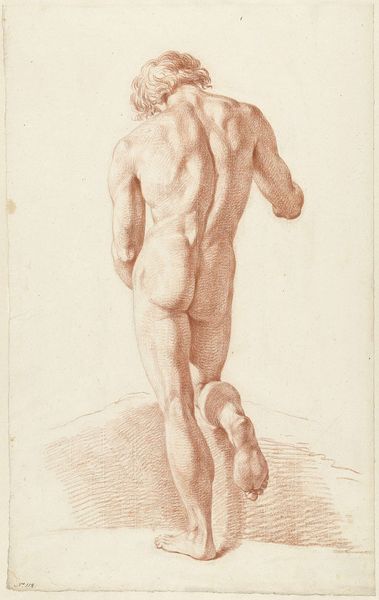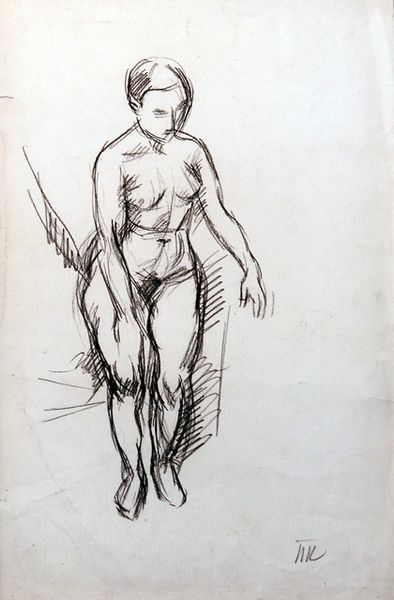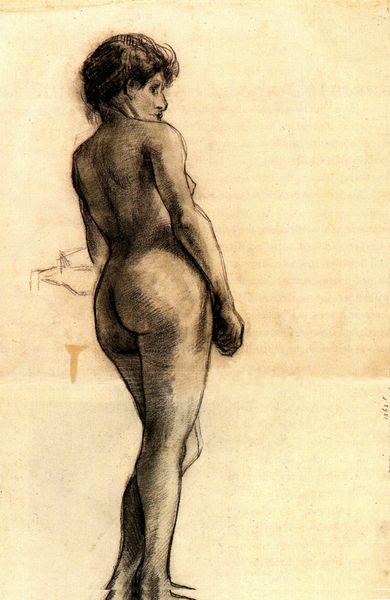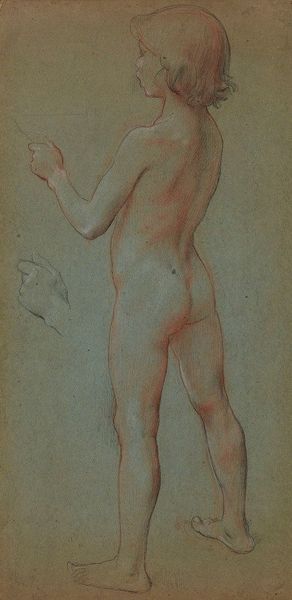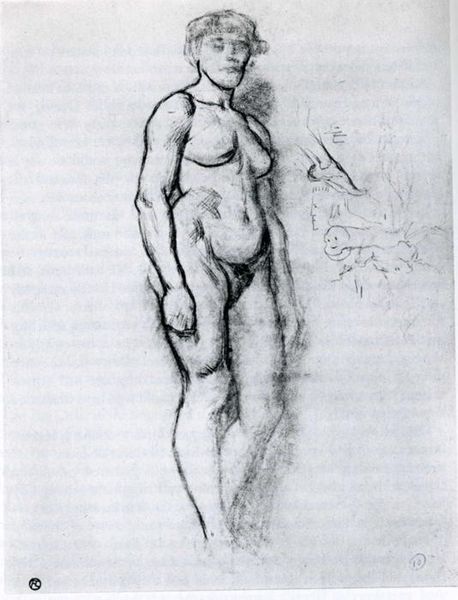
drawing, ink, pen
#
portrait
#
drawing
#
pen sketch
#
pencil sketch
#
figuration
#
ink
#
sketch
#
men
#
human
#
sketchbook drawing
#
pen
#
post-impressionism
#
nude
#
male-nude
Copyright: Public domain
Editor: This is "Idol," a pen and ink drawing from 1886 by Vincent van Gogh, currently residing in the Van Gogh Museum. The immediate impression is one of raw, almost frantic energy, captured in the quick, assertive lines. What can you tell me about the structural elements at play here? Curator: Note the hatching technique, deployed strategically to articulate the figure’s form. It defines volume, weight, and the fall of light across the planes of the back and shoulders. Do you observe how the density of the linework shapes the curvature of the body? Editor: Yes, I see how the varying line thickness suggests depth, but I am unsure why one arm has far less detail? Is that to drive the viewer to consider asymmetry or perhaps suggest that part of the body is in shadow? Curator: A valid observation. Notice also how the relatively undeveloped face directs the viewer's focus on musculature. Van Gogh uses simplified forms to denote bodily strength rather than complex features that convey emotions, which is not often the case in portraiture. This raises an interesting question about the signifier "idol" itself. Is the strength idolized? Or is it some other intrinsic feature that merits this naming? Editor: It's interesting how analyzing form in itself brings one to question Van Gogh's intention. Thank you for that perspective. Curator: It reveals the complex interrelation of aesthetics and ideas inherent to this post-impressionist style.
Comments
No comments
Be the first to comment and join the conversation on the ultimate creative platform.
